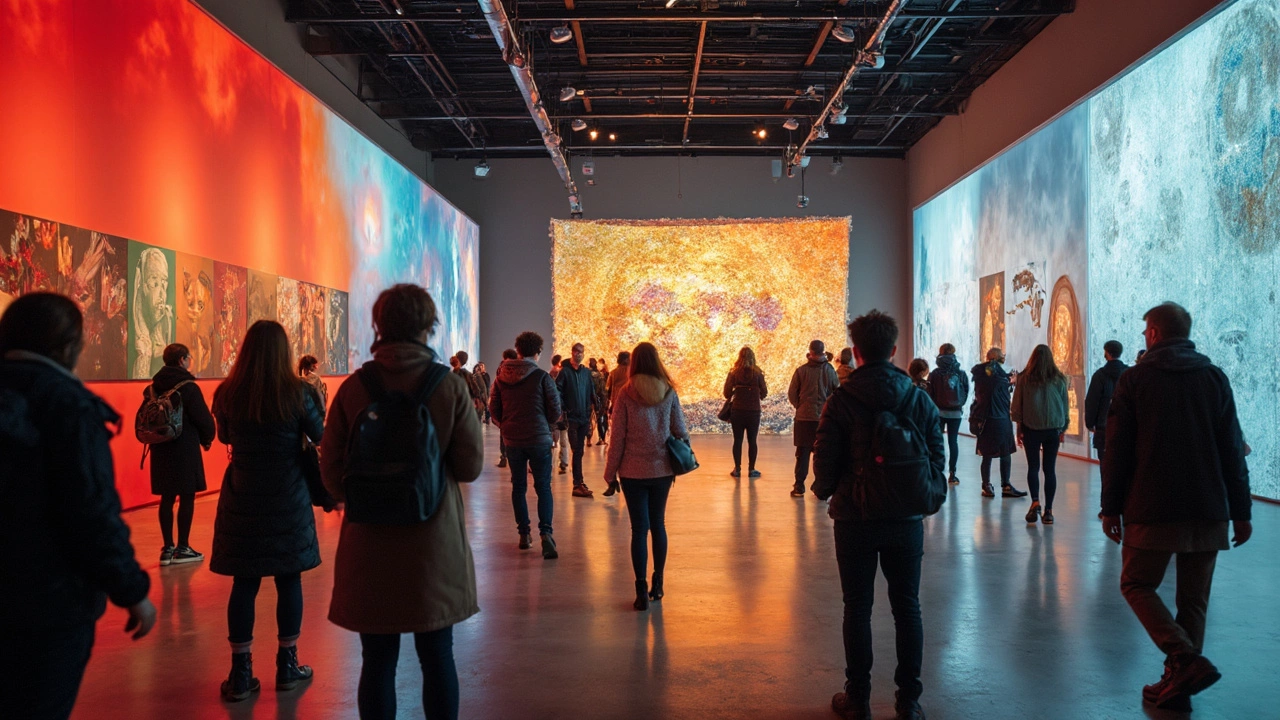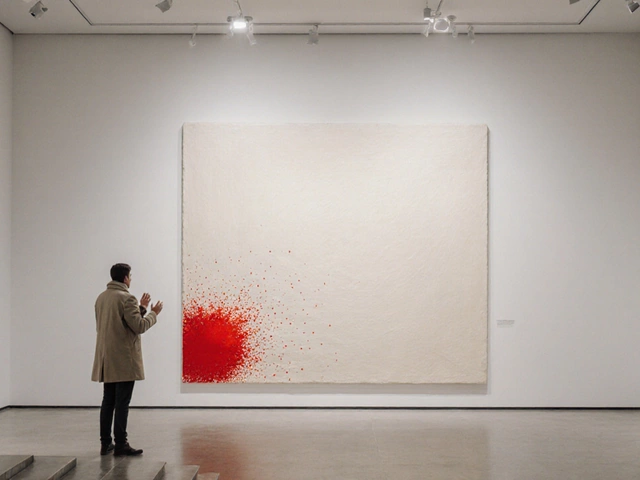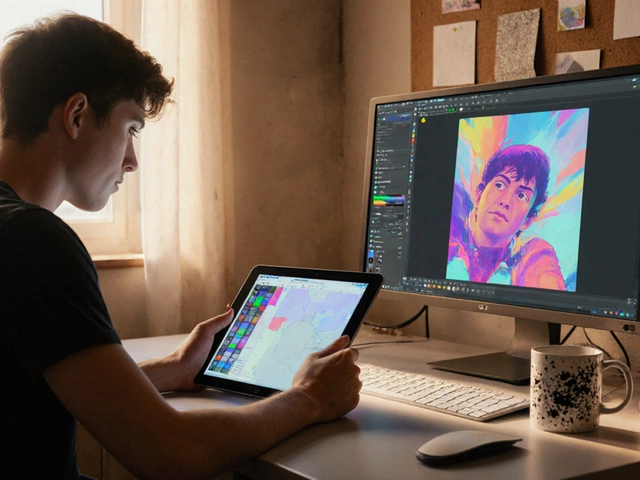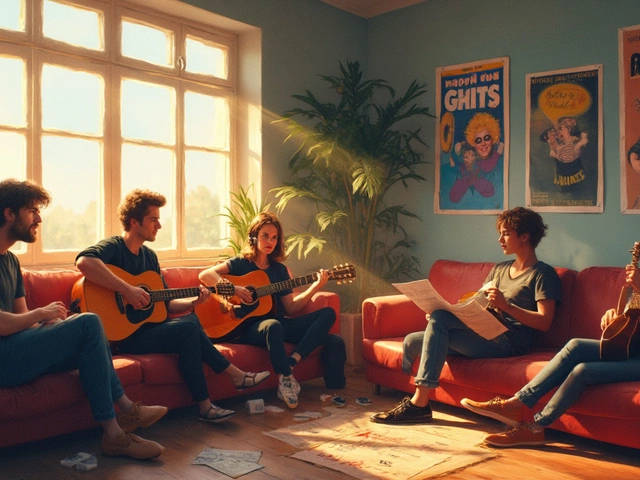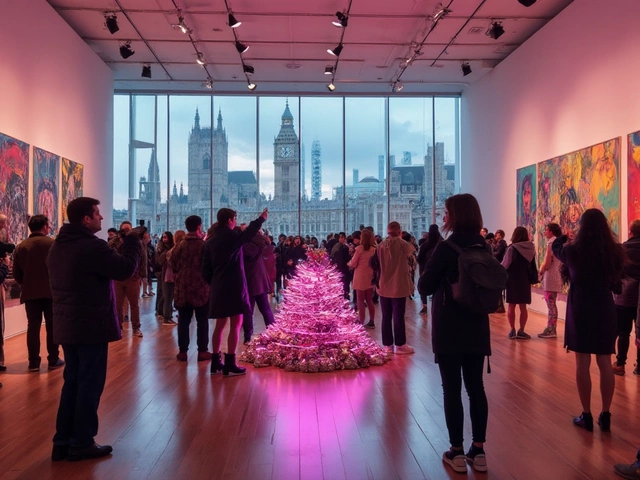You don't need to stroll through a museum to see how much art has changed in the past few years. The current art scene is buzzing with energy, and honestly, it looks nothing like the old textbook movements. Scroll through TikTok, pop into a small urban gallery, or check the latest Paris Biennale, and you’ll spot wild inventions everywhere—AI-generated portraits, bold protest murals, and pieces that use recycled plastic trash as a main event.
If you've wondered what drives these changes, it’s a combo of tech, activism, and real-life stories. Artists today are ditching the idea of sticking to one style or material. Instead, they mix things up, blending digital tools with old-school paint, or using their work to call out climate change and social justice issues. That shift didn't just come out of nowhere; it's all about artists reacting fast to new problems, new tech, and new ways to show their work (think livestream art battles or online group shows).
If you’re curious to spot what’s trending or want to get your own hands dirty, keep an eye on how artists play with technology, what issues they're talking about, and where their art shows up online and off. The rules are looser than ever—pretty much anything goes if it grabs attention and sparks a real reaction.
- Digital Domination: Tech and Art Collide
- Art for Change: Activism and Social Practice
- The Rise of New Surrealism
- Craft and Nostalgia: The Handmade Comeback
- Where to Spot the Trends: Tips for Art Lovers
Digital Domination: Tech and Art Collide
Art and tech are pretty much glued together in 2025. Digital art is everywhere, from AI-generated pictures that land on magazine covers to viral digital drawings on social media. And we're not just talking about Photoshop tweaks or filters—this stuff is a total game-changer for contemporary art.
Here’s the wild part: AI programs like DALL-E 3 and Midjourney can spit out totally new artworks in minutes. The auction house Christie’s sold an AI-generated piece for $432,500 back in 2018, and it’s only gotten crazier since. Now, AI work regularly makes it into major shows, and even big brands like Adidas and Nike commission digital artists for their campaigns.
Another trend making noise is the use of AR and VR. At the Venice Biennale last year, over a third of all installations used some kind of immersive tech. Visitors could walk through a digital forest or see 3D stories pop up on their phones. It’s interactive, and people can experience art without ever stepping inside a museum.
NFTs are still shaking things up, even if crypto hype dipped. Tons of artists have found ways to sell digital pieces directly to fans, skipping the gallery middlemen. Some creators, like Beeple, have turned single artworks into million-dollar news stories overnight.
"Digital creativity has become the backbone of contemporary art, not just a side project," said Marc Spiegler, former director of Art Basel.
If you’re curious how tech and art team up, look out for:
- AI tools (DALL-E, Midjourney, Stable Diffusion) cranking out fresh art styles.
- Augmented reality (AR) used in murals and street art you can unlock with your phone.
- VR headsets that take you inside whole virtual worlds made by artists.
- Digital sculptures and 3D models printed into real-life objects.
- Online art communities—like Discord servers or Instagram collectives—pushing creative collabs across the globe.
| Tech Trend | 2024 Usage in Major Shows |
|---|---|
| AI-Generated Art | 28% |
| AR/VR Installations | 34% |
| NFT Digital Sales | $1.2 Billion Value |
Instead of fighting tech, most artists are grabbing it with both hands. The fast pace and mix of digital tools means anyone—from a teenager in Brazil to a big-name pro in Berlin—can join the movement and make something that pops. If you want to see the future of art, you probably already have the main tool you need in your pocket: your smartphone.
Art for Change: Activism and Social Practice
If you look at what's hitting hard in contemporary art right now, it's not just pretty pictures—it’s bold, in-your-face projects pushing for change. Artists are using their work to spotlight issues like climate change, racial justice, and even housing inequality. Instead of just hanging up paintings, they're running hands-on workshops, building community gardens, or organizing marches that double as live performance pieces.
Take the art collective For Freedoms in the U.S.—they’re famous for turning billboards into tools for social awareness and sparking conversations on democracy and civil rights. Then there's Olafur Eliasson, whose installations (like his melting iceberg blocks in global cities) aren't just cool to look at—they're meant to make people face the reality of the planet warming up in real time.
Social practice art means artists don’t always work alone in a studio. They partner up with local groups, activists, even schools, to get more people talking and acting on important topics. Sometimes the "art" is the collaboration itself—solving problems by getting people involved, rather than selling a finished piece.
If you want to spot or support this kind of art, here’s what to look for:
- Check out community centers and local art events, not just big museums—lots of activism-driven work starts small and local.
- Follow artists and collectives on social media who talk openly about politics, identity, or the environment. Their stories and live streams can be as important as their finished work.
- Look for projects that invite people to take part—like public murals, eco-art installations, or online workshops. You can often contribute even if you’re not an artist.
In 2025, art that pushes for social change isn’t just a side trend. It’s become one of the main ways artists are getting their voices heard and making a difference outside the traditional gallery walls.
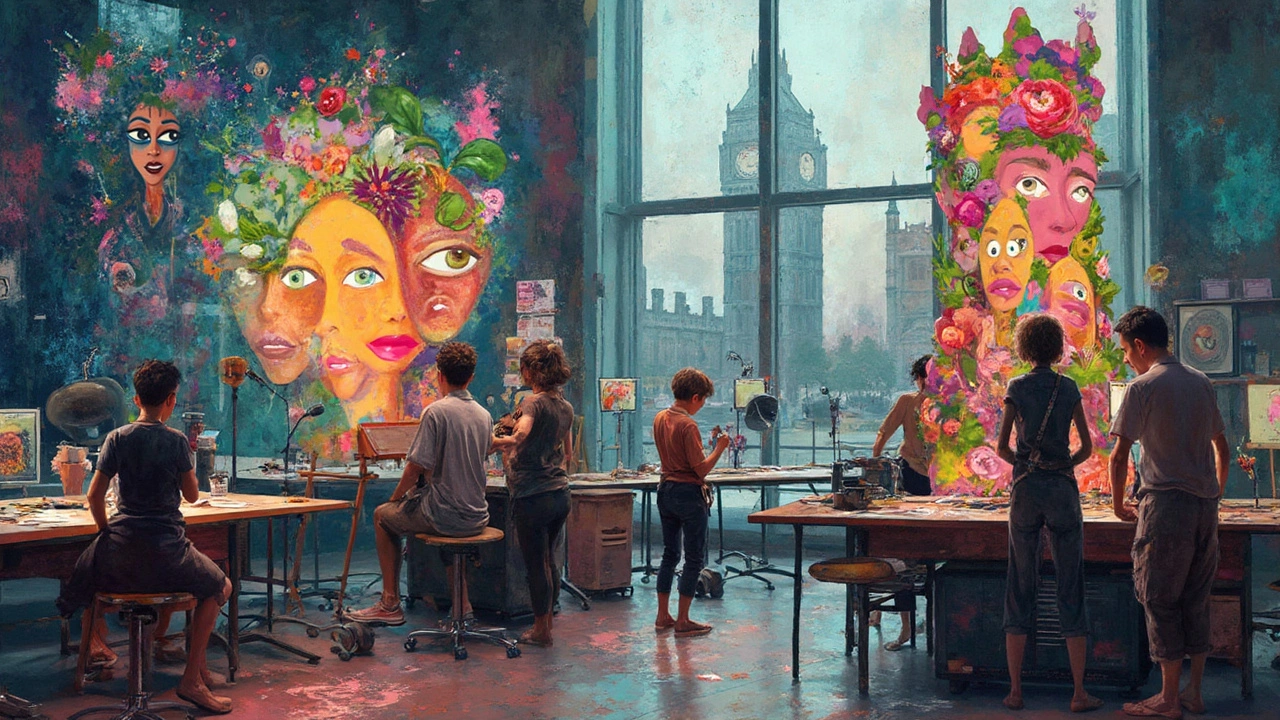
The Rise of New Surrealism
Surrealism isn’t just something you’d see in a Salvador Dalí painting anymore. Today, this wild and dreamlike style is making a comeback in contemporary art but with a twist. You’ll spot hints of surrealism everywhere—from mind-bending digital collages on Instagram to strange, oversized installations in London’s Tate Modern. Instead of old-school melting clocks, expect morphing faces, trippy virtual landscapes, and art that blurs the line between real and made-up worlds.
What’s driving this trend? First off, technology is a big one. Artists are using AI and 3D software to create visuals that stretch reality way further than a paintbrush ever could. Take Refik Anadol, a Turkish-American artist known for giant, AI-powered visual pieces—his hypnotic projections turn buildings into living, breathing art. Or the recent boom in digital artists using tools like Adobe’s Photoshop and open-source AI image generators, letting anyone with a laptop whip up weird, surreal scenes in seconds.
This new surrealism isn’t just about digital tricks. There’s also a real push to explore everyday anxieties—like climate change or internet addiction—through twisted, fantasy-inspired art. Look at Julie Curtiss, whose paintings turn classic portraiture on its head with odd hairdos and faceless characters, showing just how strange regular life can seem right now.
And thanks to platforms like Instagram and Behance, it’s easier than ever for artists to share their surreal experiments with a global audience. Galleries have followed—shows dedicated to new surrealism popped up at Frieze London 2024 and the New Museum in New York, both spotlighting artists who bend reality with everything from video to sculpture.
If you’re eager to spot this trend yourself, check out online art fairs or follow hashtags like #newsurrealism. Want to try it out? Start by combining unrelated images in apps like Procreate, or play around with AI art generators. Don’t worry if it gets weird—right now, the weirder, the better.
Craft and Nostalgia: The Handmade Comeback
You’d think tech runs the show in contemporary art, but hand-crafted work is having a serious moment. Artists are returning to classic techniques like ceramics, textiles, beading, and woodwork—not as a throwback, but to make a point. Handmade art feels more personal, and in a world packed with digital everything, folks crave that human touch.
Recent surveys from Art Basel and UBS in 2024 showed that sales of textile pieces and ceramics jumped 19% over the last year at international art fairs. If you're scrolling through Instagram or browsing at a trendy art market, you'll find punchy embroidery, funky painted pottery, and hand-sewn banners right next to high-tech digital installations. It's not just about making pretty things; artists use crafts to talk about family, identity, and even politics.
- The Gee’s Bend quilters were featured at major museums, spotlighting Southern Black craft traditions in a big way.
- Japanese ceramic artist Takuro Kuwata’s wild, almost cartoonish pottery scored him solo shows in Europe and plenty of copycats on Etsy.
- Yarn bombing—a street art trend where people cover public benches, trees, or statues in knitted or crocheted fabric—popped up in cities like Toronto and Melbourne, turning old-school techniques into urban statements.
Some explain this trend as a response to fast fashion and mass production—people are tired of seeing the same thing everywhere. With handmade art, every piece stands out. Plus, there's comfort in nostalgia, especially in unpredictable times. If you want a tip for spotting what’s hot in the handmade world, look for artists who mix old-school craft with modern topics or humor. That’s what collects buzz at galleries and on social media, and it’s the kind of thing that makes contemporary art feel more alive than ever.
| Medium | Growth in Sales (2024) | Popular Regions |
|---|---|---|
| Ceramics | +23% | Europe, Japan, USA |
| Textiles | +17% | USA, South Korea, UK |
| Mixed Media Craft | +12% | Australia, Germany, Canada |
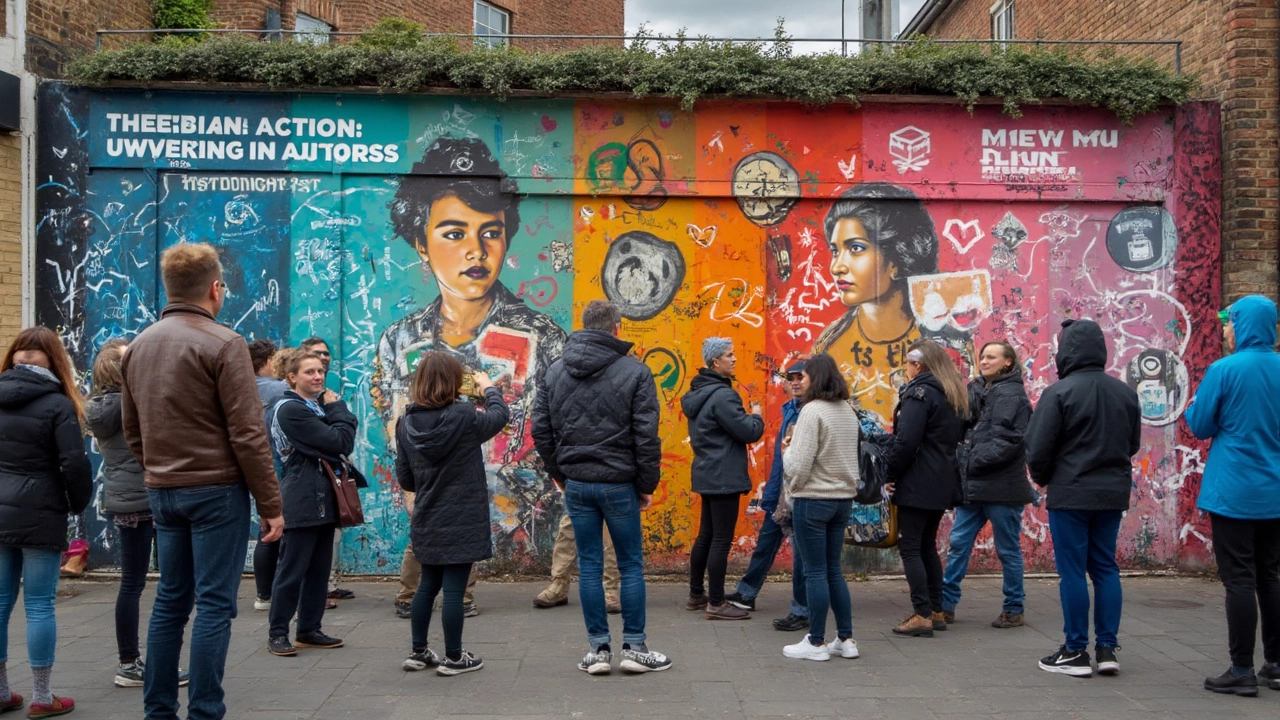
Where to Spot the Trends: Tips for Art Lovers
Want to catch the action in contemporary art? You don’t need to wait for a major museum show. Most buzz in 2025 comes from smaller pop-ups, art fairs, and, no surprise, online platforms. Big names like Art Basel still pull headlines, but Instagram can float an unknown artist to global fame overnight. For anyone hunting what’s hot, knowing where to look is half the game.
- Art Fairs and Biennials: These are still king for seeing what’s new. Shows like the Venice Biennale, Art Basel, and Frieze pack the latest digital installs, experimental pieces, and activist art under one roof.
- Galleries (Big and Small): Independent galleries, especially in neighborhoods like London’s Shoreditch or NYC’s Lower East Side, now lead the way. They’re where you’ll spot first runs of AI-based art or climate protest installations.
- Online Spaces: Instagram and TikTok have become default galleries. Artists use them for sneak peeks, collaborations, and direct sales. NFT marketplaces like SuperRare and Foundation still have traction, especially for digital art drops.
- Public Art and Murals: Street corners, skate parks, even abandoned warehouses—these spots burst with art tied to activism and tech. In 2024, murals linked to climate change campaigns grew by more than 40% in global cities.
- University Shows and Artist Collectives: MFA programs and artist groups often launch trends before they even reach the mainstream. Checking out their end-of-year shows is a smart move for early adopters.
Still, not sure where to go? Here’s a quick cheat sheet for the top spots in 2025:
| Place | Why It's Hot |
|---|---|
| Art Basel (Switzerland, Miami, Hong Kong) | Focus on emerging tech/art crossovers |
| Instagram/TikTok | Most new artists break out here first |
| Venice Biennale | Spot ambitious global projects and collaborations |
| SuperRare, Foundation | Best places to buy and spot digital/NFT art |
| Local pop-up shows | Hands-on community activism and experimental work |
If you're new to this scene, follow artists you like online, subscribe to gallery newsletters, and don't be shy about DM-ing creators with questions. Sometimes you pick up the coolest tips just by asking or showing up at a low-key opening. Staying curious is the best way to spot real trends before they go big.
